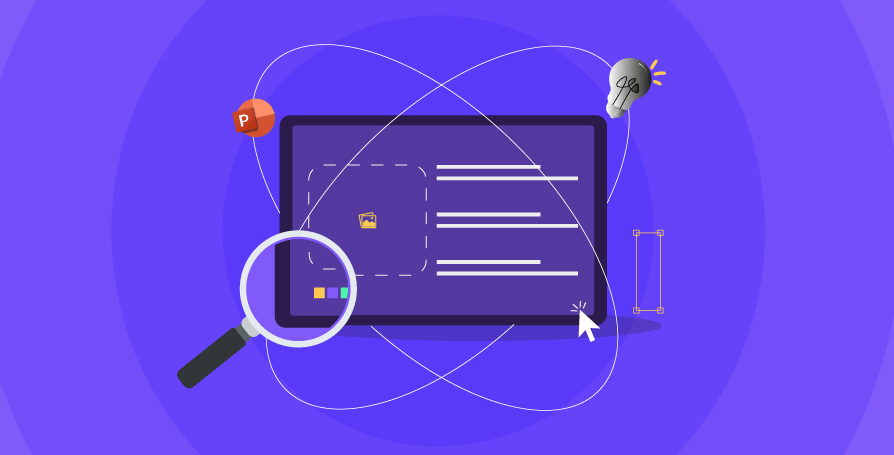13 May 2024
In the fast-paced world of online marketing, captivating brochure design is still a timeless strategy. Surely, you’ve pocketed many brochures in your time, so you know how effective they can be as a tactile ally for a business. They not only serve as a reference for a business’s services, but they are also a powerful marketing tool. An eye-catching brochure can help a business stand out, which is not an easy task in the current landscape. Let us guide you through the checklist of what is needed for an effective and memorable brochure design.
What is the difference between a pamphlet and a brochure design?
In the world of marketing, you might have already noticed that “brochures” and “pamphlets” are used interchangeably, but note that they represent two distinct documents with different forms and purposes. A pamphlet is a single page that shares information about a subject. On the other hand, brochures often consist of multiple pages, depending on the amount of information being shared, and are specifically created to promote a service or business. Although both pamphlets and brochures are helpful marketing tools, deciding which format is better suited for your business is essential for planning a successful marketing strategy.
How to design an effective brochure
We know it can be overwhelming, which is why we’re breaking down the process into manageable steps to help you create engaging and impactful designs. The purpose or aim of your brochure will define the content, format, and images you choose. By following these steps, you can create a compelling brochure that keeps your reader engaged and motivated to take action.
Define your purpose
The initial step in creating an interesting brochure is to define your purpose: Is your brochure part of a direct marketing campaign? Is it promoting a service or a product? Does the brochure aim to attract new clients? By identifying your core purpose, you’re able to structure the rest of your brochure design to fit your objectives. The strategy moving forward would be to consider how the content, graphics, and call to action of your brochure will align with your goals.
Identify your target audience
As you would with any design project, you need to consider the intended audience that it’s aimed at. You will need to tailor your brochure’s design taking into account your audience’s demographics, interests, and preferences. For example, a brochure for a children’s art class would be targeted at parents of school-age children.
You also need to ask yourself where these brochures will be distributed. Depending on where it will be displayed, there might be ways to make the design stand out in those locations, and understanding the audiences that frequent them helps inform your design to communicate your objectives better. So the art class brochures could be displayed at a community center, school libraries, or any other place where students or parents could find them.
Decide on the content of your brochure
Keeping in mind the brochure’s objective and audience, create an outline with all the sections the brochure should address. Considering the brochure’s foldable format, you could split sections page by page. Here is the space to present your value proposition, speak plainly and clearly about your service or product, and include a call to action that lets the reader find you easily. Every brochure must include brand assets, sections with their own titles and subtitles, contact details, and relevant, eye-catching visuals.
Include specific messaging
With your outline and purpose ready, the next step is concerned with actually writing the copy. A brochure’s copy should address the customers directly to persuade them of your service or product’s benefits. Keep in mind the copy’s position within the brochure’s structure, and keep the copy short, simple, and to the point. Remember, a brochure is presenting a quick sample of your brand’s identity, so it needs to be straightforward and engaging.
Choose your brochure type
Once you’ve decided on the content you want to share, now comes the time to choose a layout that appropriately showcases it since the brochure’s format will affect how readers interact with the content. There are several options for how to print and fold your brochure, so opt for one that suits your content best. Common brochure folds include the tri-fold, the z-fold, two-fold, gate-fold, and the multi-page that is either bound or stapled. Depending on the brochure’s design, you can organize the material effectively for maximum impact.
Plan the layout
In this step, plan the layout by focusing on the content organization; begin adjusting and resizing images, fixing the colors, and aligning the content to create a layout that has a neat flow that is easy for readers to follow.
Think back to your brochure types to decide on the appropriate layouts for your brochure. A brochure with a folded design, such as a tri-fold or z-fold, is usually the standard fold for brochures and is most common for promoting a business or service. Larger brochures with multi-page designs that can be stapled or bound together are used to showcase a large selection of products or services, almost like a tactile website. Or if you’re feeling adventurous, you can opt for a unique cut, like opening the brochure like a box, which is a creative way to stand out.
Design on-brand marketing material
Since you are creating a tangible piece of branding, the piece in question needs to make that branding clear. Maintain consistency across your brochure design by adhering to your brand’s guidelines in terms of color, font, and imagery. And not to mention the brand’s logo! You want those who pick up your brochure to start recognizing your brand.
Print your brochure
Before sending out your design for printing, test it out first. Print a copy to check how the colors appear, and more importantly, make sure that the folds are on the right lines and the brochure’s content is sectioned out properly. This step helps ensure that the brochure is polished and decreases the room for error in the final copy. Once you’re satisfied, you can now send out your design to get it printed by a professional printer.
Tips for designing an effective brochure
There are many factors to consider when designing a successful brochure. Here are some valuable tips to keep in mind during the design process:
Keep it simple
As always, simplicity is key. Avoid overwhelming the reader and discouraging them from reading. Avoid too much text, too many images, and distracting design elements. A clean and effortless design is ideal for a brochure; it keeps readers focused and involved.
Use strong and relevant images
When it comes to selecting images and visuals for a brochure, you need to think about which visuals will actually help tell the story. Usually, people notice the images first, so go for relevant and illustrative images that complement that content and elaborate further.
Use headlines and subheadings
You need to acknowledge that not everyone will read through your entire brochure, which is why it is important to use headers and subheadings to their full potential. The headers need to be catchy and informative to guide the reader so that they can skim the text and still understand what the main points are.
Be strategic with fonts and colors
Be mindful of user readability and use legible fonts. Also, consider the contrast between the font and background colors to enhance readability and avoid straining the reader’s eyes.
Use color wisely
When it comes to selecting colors for your brochure, choose a harmonious color scheme that is in line with your brand identity. Avoid clashing colors and inconsistent color pairings that hurt the eyes and turn readers away.
Pay attention to hierarchy, balance, and flow
With your content and images organized and on brand, you can start getting picky with the finer details of the design. Although you might start with a defined hierarchy, the modifications throughout the design process could alter the initial vision, so a review is needed to realign with the original goal. Hierarchy, balance, and flow are three essential elements for a readable brochure, and this step is to make all the necessary changes to ensure a practical and effective brochure.
To determine if you’re on the right track, there are points you need to consider. Think about the size and spacing between the titles and subtitles, the placements, and the balance between the text and graphic elements. Scrutinize the flow; it should convey a clear hierarchy of the content. Make sure the font is legible and the visual isn’t too busy or harsh. Remember, different brochures and content have different formats, but it is a good exercise to double-check how readable and understandable your brochure is.
A memorable brochure is expected to have all the answers, it is laser-focused on its purpose and gets to its main idea fast. Layout, branding, design, and content are all means to an end, and together they all contribute to a powerful tool that lands your business’s message directly in your audience’s hands. With a thoughtful showcase of your brand, you can inform and activate your audience into involved consumers.






